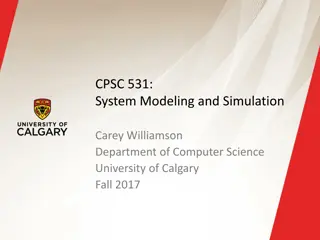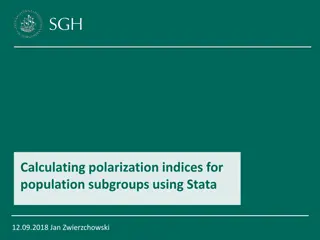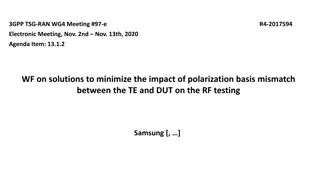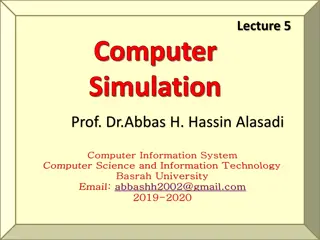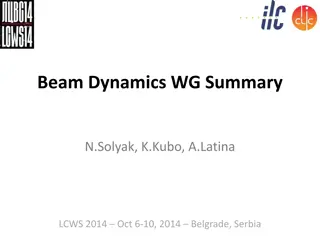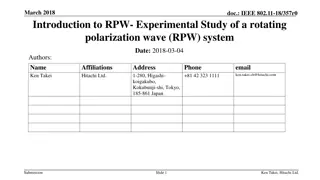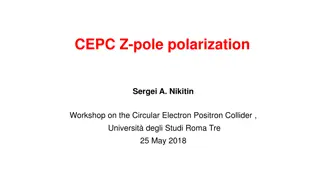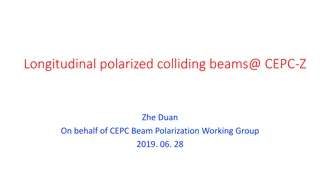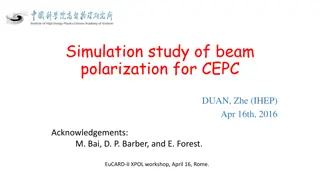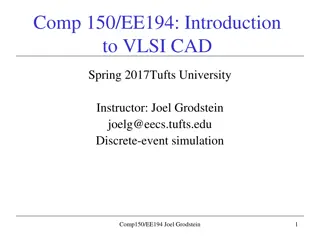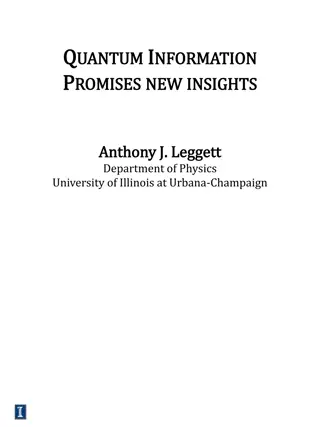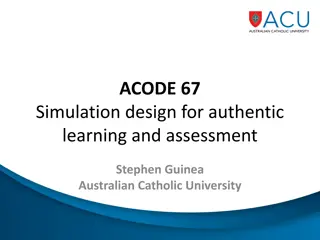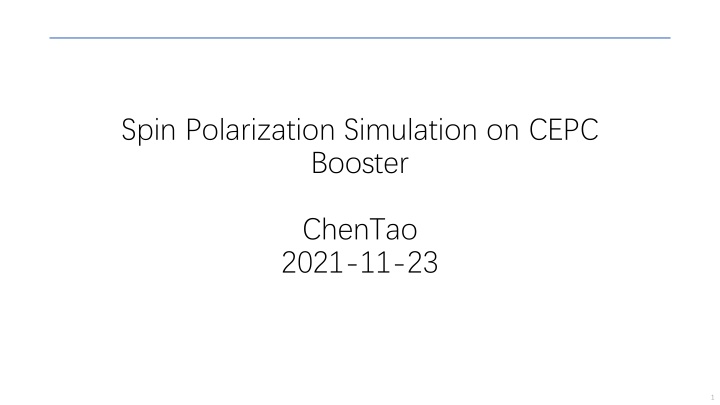
Spin Polarization and Depolarization in Particle Accelerators
This simulation explores the generation and transmission of polarized beams in the CEPC accelerator, focusing on maintaining beam polarization in the booster and collider regions. It delves into spin motion in a synchrotron, discussing the preservation of polarization in perfect and real ring scenarios, as well as the impact of spin resonances on beam depolarization effects.
Download Presentation

Please find below an Image/Link to download the presentation.
The content on the website is provided AS IS for your information and personal use only. It may not be sold, licensed, or shared on other websites without obtaining consent from the author. If you encounter any issues during the download, it is possible that the publisher has removed the file from their server.
You are allowed to download the files provided on this website for personal or commercial use, subject to the condition that they are used lawfully. All files are the property of their respective owners.
The content on the website is provided AS IS for your information and personal use only. It may not be sold, licensed, or shared on other websites without obtaining consent from the author.
E N D
Presentation Transcript
Spin Polarization Simulation on CEPC Booster ChenTao 2021-11-23 1
Generate Polarization Beam in CEPC and Transmit to collider Longitudinal polarization in source & linac Spin rotators Partial Siberian snake(s) Spin rotators Polarized electron gun can generate 80%~90% polarization beam The polarized beam needs to be accelerated in the booster(10GeV - > 45 GeV for Z-pole operation) Motivation : To maintain beam polarization in the booster. Vertical polarization in booster & collider arc region 2
Spin motion in Synchrotron Tomas-BMT equation: Use the motion parameter to replace the magnetic field Use wave function to express the equation in which Solve for one revolution around the accelerator 3
Spin motion in Synchrotron In perfect planar ring: No transverse motion; ?1= ?2= 0 ; 2 ???= ?3,??= ?? ; Polarization on vertical direction preserved. In real ring: ?1,?2 0 ; 2 ? ?? ?? 0 0 ?? ??= ? ??? ?? ? ?? ??= ? ? , the off-diagonal element is the source of depolarization Choose a certain K , the equation can be solved : Compare the 2 terms we can get We can conclude: only when K close to ??, the spin closed orbit obviously deviate from vertical direction, Thus the depolarization terms with different K can be treat separately .They are so-called spin resonances , K is the location of spin resonance. 4
Spin resonance In a planar ring, the closed orbit spin tune ?? ??, two families of important spin resonances: Imperfection resonance ?? = ? , K is integer -Driven by the dipole fields due to the tilts of bending magnets and the misalignment of quadrupoles. Intrinsic resonance ?? = ? ??, K is integer -Driven by the vertical focusing elds of quadrupole magnets - Its strength is proportional to amplitude of the vertical betatron oscillation Adjacent imperfection and intrinsic resonances are well separated ?? ?? = 0.21 max(|?|) But crossing some of these spin resonances would lead to depolarization 5
Depolarization Effect Crossing a single resonance: Spin closed orbit Far from the resonance Closed to the resonance After the resonance Crossing speed Fast cross : polarization not changed; Slow cross: adiabatic , the spin follows the closed orbit flipping; Depolarization : non- adiabatic and the spin partially follows the spin closed orbit 6
FS formula: The beam polarization after crossing a single-isolated spin resonance can be calculated w/ Froissart- Stora formula, trade-off between spin resonance strength and crossing speed = dG /d For 0.1 < /sqrt{ } < 2 , loss of polarization (depolarization) PFS=-1 means flipping of spin direction, but keeping the same polarization 7
Siberian Snake rotates spin vector by 180 degree and do not affect orbital motion The perturbation on the spin from the accelerator lattice is canceled in successive turns Partial snake : rotate degree less than 180 . 8
A synchrotron with a partial snake The closed orbit spin tune satisfies: cos???= cos??cos?? implemented with a partial snake whose spin rotation angle is s* . To avoid depolarization due to the intrinsic resonances, the betatron tunes should be close to integer. 2for a synchrotron Closed orbit spin tune for a no-ramping solenoid snake with decreasing s over the beam energy Closed orbit spin tune for partial snake with different s
Lattice independent simulations Diagram of the simulation algorithm Launch a beam of 32 particles to account for amplitude dependence of intrinsic resonance strength Benchmark: single spin resonance: ? = 0.02 ,? = 30. scan ramping rate ? Imperfection resonance resonance Intrinsic resonance ?3 = 2? ??2 2? 1 M.Bai, PhD thesis, 1998
2025/3/18 ChenTao Simulation results With constant snake , betatron tune=0.21 Constant snake = ? Constant snake = ? 2 11
2025/3/18 ChenTao Simulation results superconducting solenoid-based Siberian snake Snake strength at injection energy=? Snake strength at injection energy=5 12
2025/3/18 ChenTao Simulation results superconducting solenoid-based Siberian snake Conclusion With constant snake , the polarization can be well preserved during the acceleration. With solenoid-based Siberian snake , the final polarization degree is extremely sensitive to betatron tune in most work space . The magnetic field needed to maintain polarization is very strong Snake strength at injection energy= 5? 2 13

